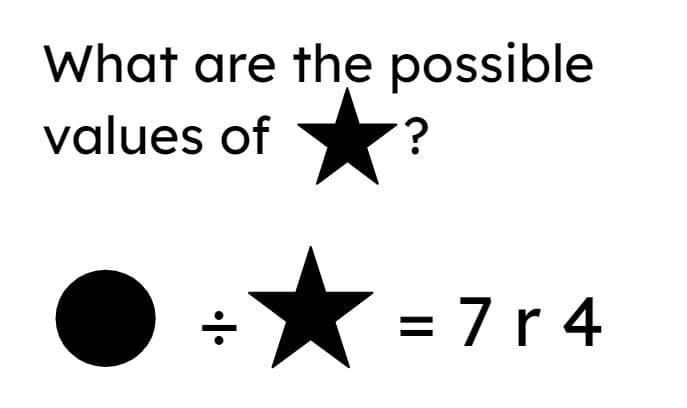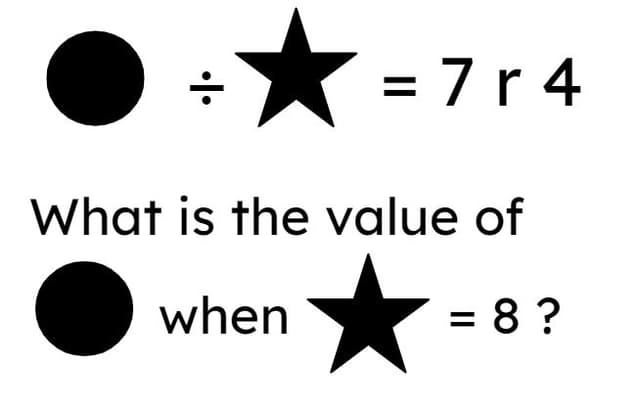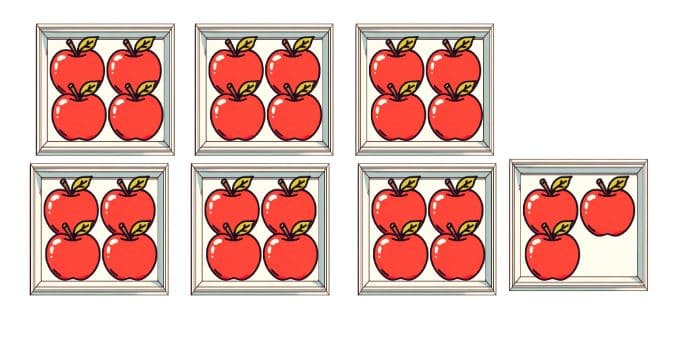Myths about teaching can hold you back
- Year 4
Decide what to do with the answer to a division calculation to solve a problem
I can decide what to do with the answer to a division calculation to solve a problem.
- Year 4
Decide what to do with the answer to a division calculation to solve a problem
I can decide what to do with the answer to a division calculation to solve a problem.
These resources will be removed by end of Summer Term 2025.
Switch to our new teaching resources now - designed by teachers and leading subject experts, and tested in classrooms.
These resources were created for remote use during the pandemic and are not designed for classroom teaching.
Lesson details
Key learning points
- When solving division problems, sometimes the remainder is recorded as the number left over.
- When solving division problems, sometimes the remainder can be ignored.
- When solving division problems, sometimes an extra group is made to include the remainder.
Keywords
Quotient - The quotient is the result after the division has taken place.
Remainder - A remainder is the amount left over after division when the dividend does not divide exactly by the divisor.
Common misconception
Children may have difficulty interpreting the problem and be unsure whether to ignore or include the remainder in the answer.
Throughout, ask and encourage children to articulate what each part of the equation represents from the problem in order to link the concrete and the abstract representation.
To help you plan your year 4 maths lesson on: Decide what to do with the answer to a division calculation to solve a problem, download all teaching resources for free and adapt to suit your pupils' needs...
To help you plan your year 4 maths lesson on: Decide what to do with the answer to a division calculation to solve a problem, download all teaching resources for free and adapt to suit your pupils' needs.
The starter quiz will activate and check your pupils' prior knowledge, with versions available both with and without answers in PDF format.
We use learning cycles to break down learning into key concepts or ideas linked to the learning outcome. Each learning cycle features explanations with checks for understanding and practice tasks with feedback. All of this is found in our slide decks, ready for you to download and edit. The practice tasks are also available as printable worksheets and some lessons have additional materials with extra material you might need for teaching the lesson.
The assessment exit quiz will test your pupils' understanding of the key learning points.
Our video is a tool for planning, showing how other teachers might teach the lesson, offering helpful tips, modelled explanations and inspiration for your own delivery in the classroom. Plus, you can set it as homework or revision for pupils and keep their learning on track by sharing an online pupil version of this lesson.
Explore more key stage 2 maths lessons from the Division with remainders unit, dive into the full primary maths curriculum, or learn more about lesson planning.

Licence
Prior knowledge starter quiz
6 Questions
Q1.Balls are put into buckets of 9. Which of the following totals won’t divide equally into pots of 9?
Q2.When dividing 28 into equal groups, which group size will give a remainder?
Q3.Which of these equations is incorrect?
Q4.Jun has fewer that 45 counters. When divided into groups of 6, there are no remainders and when divided into groups of 7 there are no remainders. How many counters must Jun have?
Q5.Look at the image.

Q6.Look at the image.

Assessment exit quiz
6 Questions
Q1.Sofia has 27 apples and is putting them into boxes of 4 apples. How many boxes will she need for all of her apples?



